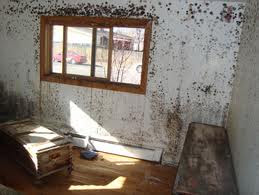Lots of homeowners find out they've an uninvited visitor shacking up of their basement. Ever seen little white fuzzy stuff on your concrete basement flooring?
removing mold from basement on concrete can take many forms. Concrete is a porous substance, and your basement ground will get quite a lot of moisture from the ground underneath it.
Often, concrete foundations have a moisture barrier. But, in some instances the moisture barrier is previous or broken, or it might not have been correctly installed.
In arid locations like Southern California, Arizona and excessive altitudes, it's possible you'll not have a moisture barrier built into your home. You often don't want it, but if you have a heavy rain or a spell of humid weather, you are prone to get that nasty Mold rising on your concrete floors.
When you've got Mold rising on basement tiles or under basement carpeting, the trigger may be the concrete underneath. No matter what your Mold drawback, it's important to remove it from your concrete.
A Little Bleach And Elbow Grease
If you happen to've obtained just a little Mold growing in your concrete surfaces, it is easy sufficient to scrub up. For little bits of Mold right here on there, use an answer of water and bleach. 4 parts water to 1 part bleach is normally the advisable formula. You can also discover cleaning merchandise designed specifically for Mold Removal.
Scrub on the Moldy spots along with your bleach and water until it is gone. Watch out - that bleach is dangerous stuff. Make sure you have some good rubber gloves and be careful that the bleach would not come into contact with anything else.
Seal It Up
If you have more critical Mold issues and an excellent scrubbing will not get rid of it, you may attempt sealing the cracks. Likelihood is, the appearance of Mold in your concrete surfaces is a symptom of an even bigger structural drawback in your home. There could also be cracks within the concrete or partitions that enable moisture to return into the house.
Go to the hardware store and search for a waterproofing compound made for this particular purpose. For those who're totally unsure, talk to the clerk and explain your problem. What you need is something particularly designed to seal up cracks in your concrete and walls. The compound will come with detailed instructions on the right way to use it.
Call The Contractor
If in case you have water wicking up from below your basis into the concrete, you've acquired a much greater problem. It's possible you'll need to name a professional.
What you may need to do is take off all the flooring so the unique concrete is exposed. This is something you'll be able to probably do your self, however you should be certain to keep your self safe. Any time you are dealing with how to remove mold from a house, be sure to have good gloves and a mask, and guantee that the Mold does not get into any other elements of the house. Even if you're working in the basement, ensure you have some air flow going.
Now, you'll need to have a new high layer of concrete poured. It has to be not less than one inch thick. Ensure that the brand new cement is combined with a waterproofing compound that may preserve down its moisture level.




